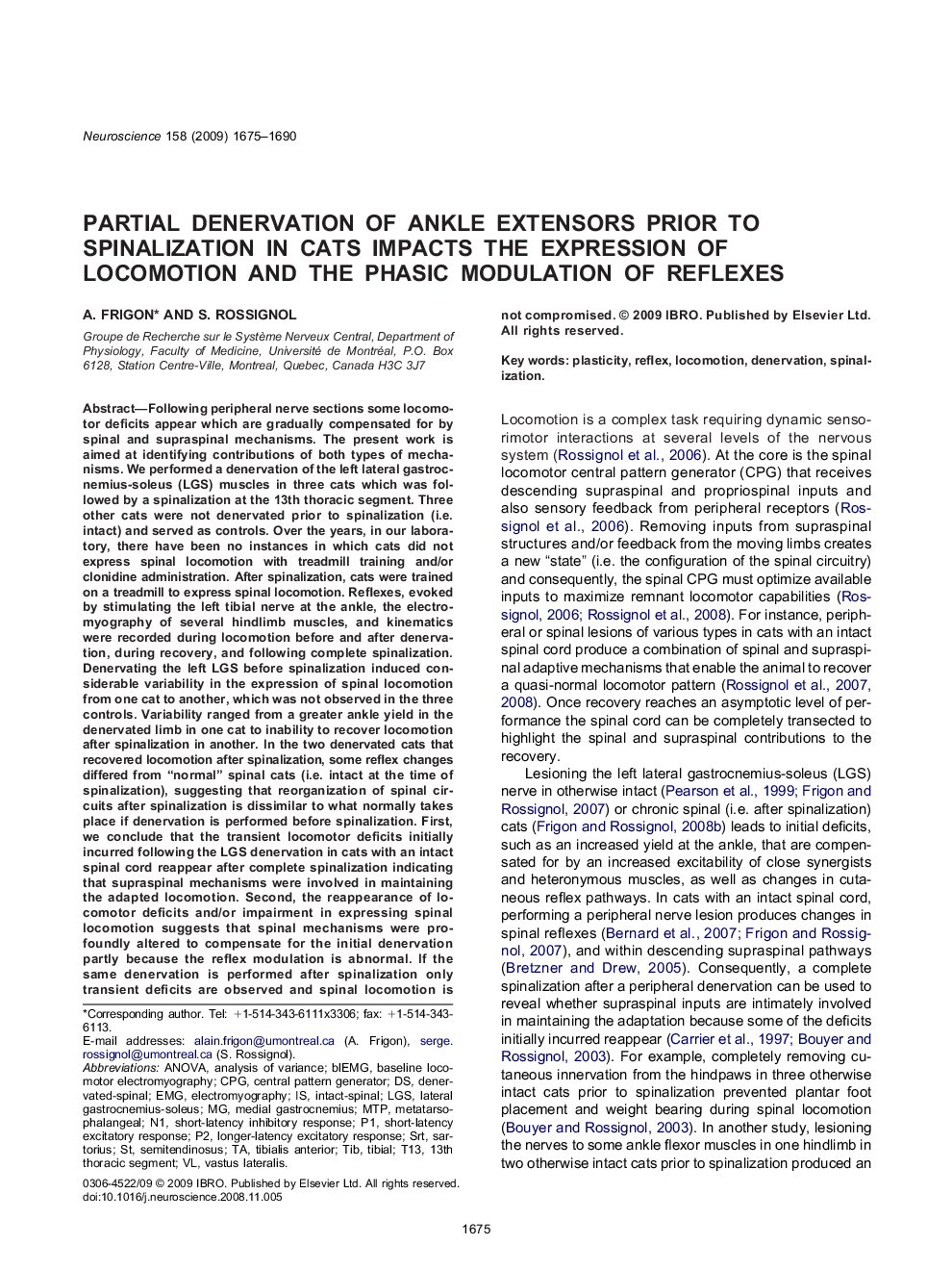| کد مقاله | کد نشریه | سال انتشار | مقاله انگلیسی | نسخه تمام متن |
|---|---|---|---|---|
| 4340314 | 1295789 | 2009 | 16 صفحه PDF | دانلود رایگان |

Following peripheral nerve sections some locomotor deficits appear which are gradually compensated for by spinal and supraspinal mechanisms. The present work is aimed at identifying contributions of both types of mechanisms. We performed a denervation of the left lateral gastrocnemius-soleus (LGS) muscles in three cats which was followed by a spinalization at the 13th thoracic segment. Three other cats were not denervated prior to spinalization (i.e. intact) and served as controls. Over the years, in our laboratory, there have been no instances in which cats did not express spinal locomotion with treadmill training and/or clonidine administration. After spinalization, cats were trained on a treadmill to express spinal locomotion. Reflexes, evoked by stimulating the left tibial nerve at the ankle, the electromyography of several hindlimb muscles, and kinematics were recorded during locomotion before and after denervation, during recovery, and following complete spinalization. Denervating the left LGS before spinalization induced considerable variability in the expression of spinal locomotion from one cat to another, which was not observed in the three controls. Variability ranged from a greater ankle yield in the denervated limb in one cat to inability to recover locomotion after spinalization in another. In the two denervated cats that recovered locomotion after spinalization, some reflex changes differed from “normal” spinal cats (i.e. intact at the time of spinalization), suggesting that reorganization of spinal circuits after spinalization is dissimilar to what normally takes place if denervation is performed before spinalization. First, we conclude that the transient locomotor deficits initially incurred following the LGS denervation in cats with an intact spinal cord reappear after complete spinalization indicating that supraspinal mechanisms were involved in maintaining the adapted locomotion. Second, the reappearance of locomotor deficits and/or impairment in expressing spinal locomotion suggests that spinal mechanisms were profoundly altered to compensate for the initial denervation partly because the reflex modulation is abnormal. If the same denervation is performed after spinalization only transient deficits are observed and spinal locomotion is not compromised.
Journal: Neuroscience - Volume 158, Issue 4, 18 February 2009, Pages 1675–1690